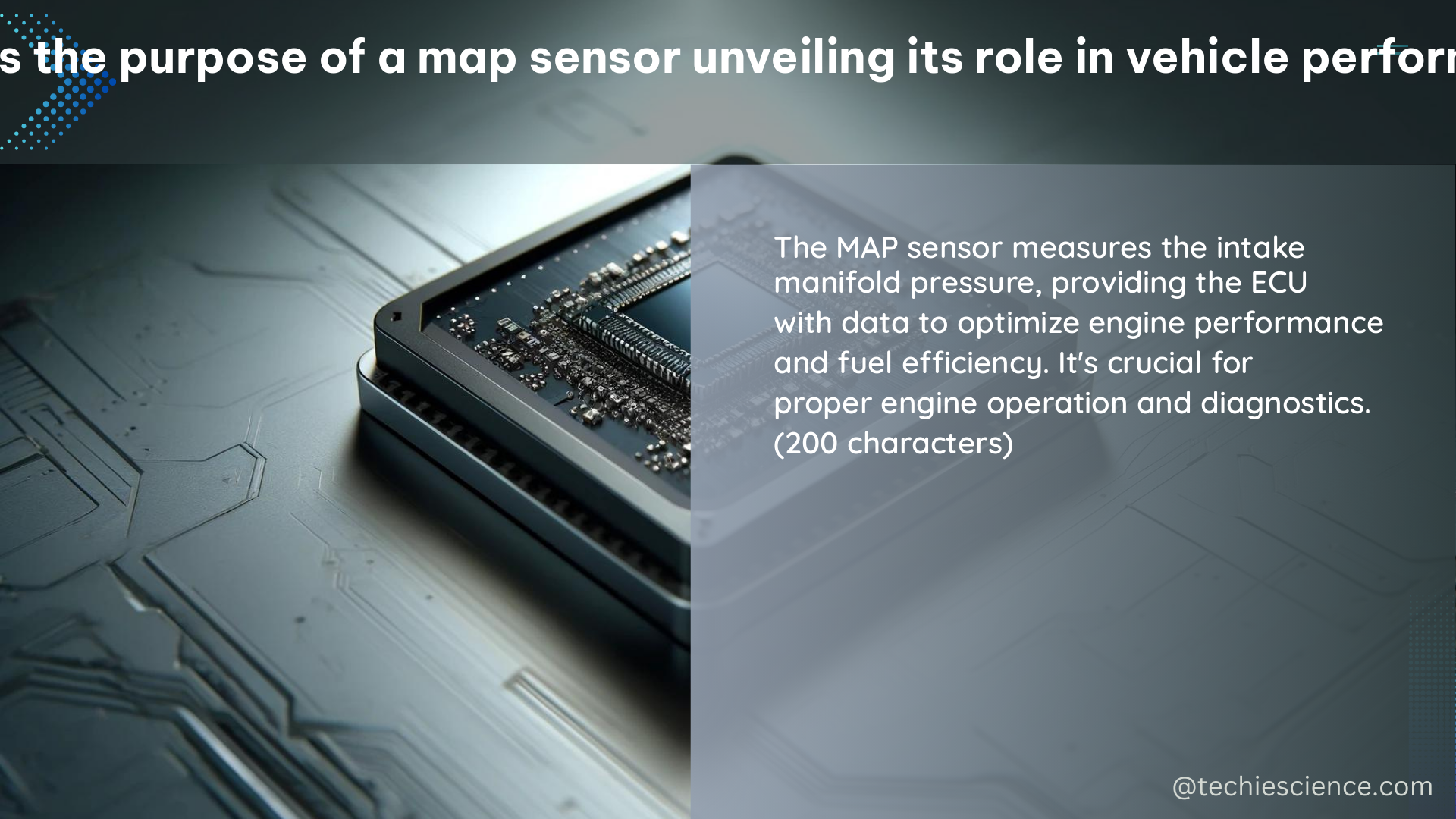The Manifold Absolute Pressure (MAP) sensor is a critical component in modern vehicle engine management systems, responsible for precisely measuring the pressure inside the intake manifold. This data is essential for the Engine Control Module (ECM) to determine the appropriate fuel injection and ignition timing, ensuring optimal engine performance, fuel efficiency, and emissions control.
Understanding the MAP Sensor’s Function
The MAP sensor measures the pressure in the intake manifold, which varies depending on the engine load and throttle position. When the throttle is wide open, air rushes into the intake manifold, causing a drop in pressure. The MAP sensor then signals the ECM to send more fuel to the engine. Conversely, when the throttle closes, the pressure rises, and the MAP sensor tells the ECM to reduce the amount of fuel going into the engine.
Pressure Measurement and Barometric Pressure Detection
In addition to measuring the intake manifold pressure, MAP sensors can also detect vacuum leaks and measure barometric pressure, which affects the fuel mixture and overall engine performance. During engine start, the MAP sensor’s internal chip flexes due to the decreasing intake manifold pressure, signaling the ECM to adjust fuel injection for optimal performance.
Collaboration with Other Sensors
The MAP sensor works in collaboration with other sensors, such as the Intake Air Temperature (IAT) sensor, using the speed density method to transform sensor readings into air mass information. This holistic approach enables the regulation of fuel delivery and ignition timing, resulting in improved engine efficiency and acceleration.
MAP Sensor Technology and Placement

MAP sensors are typically found in fuel-injected engines and can be located on the intake manifold or throttle body. They use a flexible silicon wafer (also known as a ‘chip’) to measure pressure changes, which cause resistance changes in the voltage, signaling the ECM to inject more fuel into the engine.
Pressure Measurement Accuracy
The accuracy of the MAP sensor’s pressure measurement is crucial for the ECM to make precise adjustments to the fuel injection and ignition timing. Typical MAP sensors have a pressure measurement range of 0 to 105 kPa (0 to 15.2 psi), with an accuracy of ±1.5% of the full-scale output.
Sensor Placement and Considerations
The placement of the MAP sensor is important to ensure accurate pressure readings. It should be located in a position where it can accurately measure the intake manifold pressure, avoiding areas with turbulent airflow or significant pressure fluctuations. Additionally, the sensor should be protected from extreme temperatures, vibrations, and potential contaminants to maintain its reliability and performance.
Diagnosing MAP Sensor Issues
MAP sensor failures can be challenging to diagnose, but common causes include contamination, clogged or leaking hoses, extreme vibrations, and electrical connector damage due to overheating or close proximity to the engine.
Symptoms of a Faulty MAP Sensor
Symptoms of a faulty MAP sensor include:
– Rough idle
– Poor fuel economy
– Slow acceleration
– Strong smell of gasoline
– Surging
– Stalling
– Lack of power
– Hesitation on acceleration
– Backfiring through the intake
– Overheating
Troubleshooting and Replacement
Diagnosing and troubleshooting a MAP sensor issue often involves using a multimeter to check the sensor’s voltage output, resistance, and continuity. If the sensor is found to be faulty, it should be replaced with a compatible and properly calibrated unit to restore optimal engine performance.
The Importance of the MAP Sensor in Engine Management
In summary, the MAP sensor plays a vital role in modern vehicle engine management systems, optimizing fuel efficiency, engine performance, and emissions control. Regular inspection and maintenance of the MAP sensor can prevent problems and ensure a smoother, more efficient ride, emphasizing the importance of understanding and acknowledging the role of this sensor in automotive technology.
References:
- MAP Sensors Are Key to Clean Engine Performance
- What is a MAP Sensor?
- Understanding the Role of a MAP Sensor in Your Vehicle
- Making Sense of Your Sensors: MAP Sensor
- Understanding the MAP Sensor: Your Guide to Engine Performance

The lambdageeks.com Core SME Team is a group of experienced subject matter experts from diverse scientific and technical fields including Physics, Chemistry, Technology,Electronics & Electrical Engineering, Automotive, Mechanical Engineering. Our team collaborates to create high-quality, well-researched articles on a wide range of science and technology topics for the lambdageeks.com website.
All Our Senior SME are having more than 7 Years of experience in the respective fields . They are either Working Industry Professionals or assocaited With different Universities. Refer Our Authors Page to get to know About our Core SMEs.